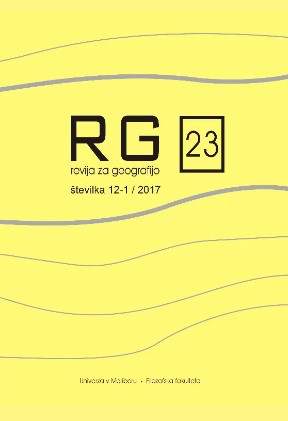The educational structure of the population in the city of Maribor
DOI:
https://doi.org/10.18690/rg.12.1.3989Keywords:
educational structure, tertiary education, Maribor, SloveniaAbstract
In the introduction, the author analyzes the educational structure of the population (by educational attainment level) in the larger Slovene towns, and compares it with the structure in Maribor, which is the second largest university town in Slovenia. He finds that Maribor is among the cities with the highest percentage of population with a tertiary education in Slovenia, but the population with a secondary education is still above the average, which is a result of the intensive development of industrial activity in the past decades. Continuing, he analyzes the situation in individual parts of the city of Maribor, and finds important differences between the individual parts of the city. The area on the left bank of the Drava River shows a higher proportion of population with tertiary education, while the areas on the right bank, especially the areas with older buildings constructed in the fifties, sixties, and seventies, and the areas around the older industrial zones show a higher proportion of population with primary education.
Downloads
References
Barle, A., Trunk Širca, N. 2010: Pomen izobraževanja v družbi prihodnosti. Model učinkovitega managementa visokošolskega zavoda. Koper.
Drozg, V. 1997: Nekatere značilnosti ustroja Maribora. Geografski vestnik, 69. Ljubljana.
Educational attainment statistics, Eurostat, 2016. http://ec.europa.eu/eurostat/statistics-explained/index.php/Educational_
attainment_statistics (pridobljeno 29. 9. 2017).
Horvat, U. 2006: Razvoj prebivalstva v mestu Maribor v obdobju med letoma 1981 in 2002. Revija za geografijo - Journal for Geography, 1-1. Maribor. https://doi.org/10.18690/rg.1.1.2874
Horvat, U. 2015: Razvoj in demografske značilnosti prebivalstva v mestu Mariboru med letoma 1961 in 2015. Revija za geografijo - Journal for Geography, 10-2. Maribor. https://doi.org/10.18690/rg.10.2.3946
Lorber, L. 2017: Industrializacija, deindustrializacija in regeneracija Maribora. Geografije Podravja. Maribor. 10.18690/978-961-286-074-5
Medmrežje 1: http://pxweb.stat.si/pxweb/Database/Dem_soc/05_prebivalstvo/20_soc_ekon_preb/01_05G20_izobrazba/01_05G20_izobrazba.asp (pridobljeno 2. 10. 2017)
Pelc, S. 2015: Mestno prebivalstvo Slovenije. Koper.
Počkaj Horvat, D. 1997: Demografske značilnosti Maribora in njegova notranja členitev. Geografski vestnik, 69. Ljubljana.
Popis prebivalstva, gospodinjstev in stanovanj 1961, 1981, 1991, 2002. SURS. Ljubljana. www.stat.si (pridobljeno 3. 10. 2017)
Ravbar, M., Bole, D. 2007: Geografski vidiki ustvarjalnosti. Georitem, 6. Ljubljana.
Statistični pregled Slovenije 2016. http://www.stat.si/StatWeb/File/DocSysFile/9199/statopis-2016.pdf (pridobljeno 30. 9. 2017).
SURS 2015: Izobrazbena sestava prebivalstva v mestu Maribor po krajevnih skupnostih (izračuni). SURS.
Tiran, J., Koblar, S. 2017: Kakovost bivalnega okolja v Mariboru. Geografije Podravja. Maribor. 10.18690/978-961-286-074-5
Downloads
Published
Issue
Section
License
Copyright (c) 2017 Uroš Horvat

This work is licensed under a Creative Commons Attribution 4.0 International License.
